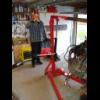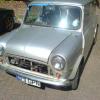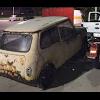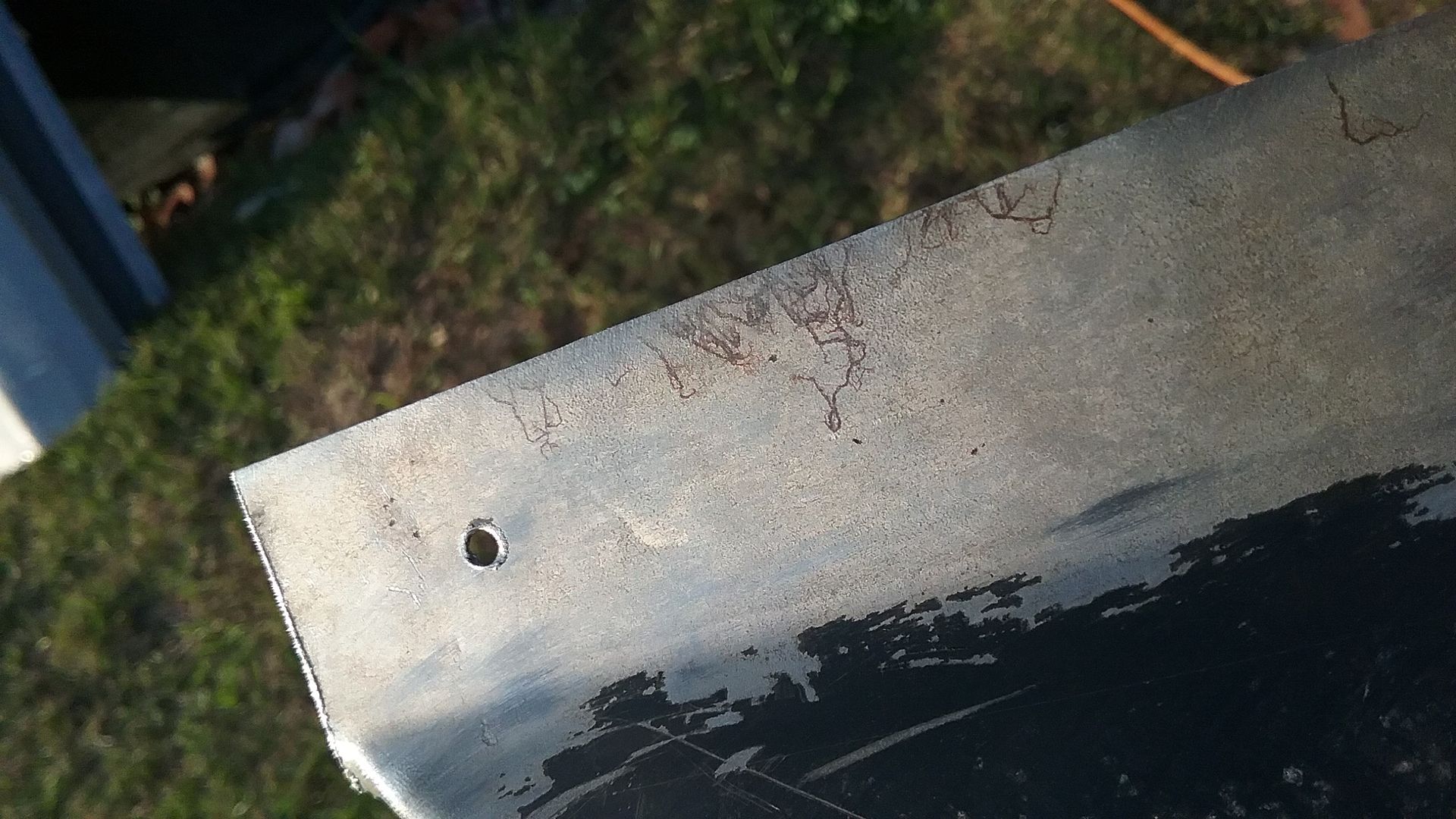Heritage Panel Protective Black Paint
Best Answer eean , 11 March 2018 - 09:57 AM
Cheers for the replies, it's mainly an inner wing I'll be fitting soon once the shell areas have been repaired to have somewhere for it to be welded to lol, it's a Mk2 68 and M machine alter the inner wings to make them look right for that year of mini, so a few areas have been taken back to steel. I think I'll give it a good look over to see any spidering anywhere then progress from that. Thanks Iain
Go to the full post 
#1

Posted 10 March 2018 - 10:21 AM
Question is what would you do to the heritage panels? Obviously the welded areas I take to steel before welding and use weld through primer but is the black etch coating good enough to keep and key in before painting? Or remove all? Cheers Iain
#2

Posted 10 March 2018 - 11:39 AM
Its a far superior coating than you find on Magnum panels which is normally primer but having had several panels with said rust marks I always sand back now.
#3

Posted 10 March 2018 - 01:17 PM
Merv
#4

Posted 10 March 2018 - 01:20 PM
I prep my heritage panels with a mixture of red scotchbrite and 320grit sanding discs on a random orbital sander.
Whilst doing this, you can see any trails of rust under the paint and then clean as appropriate.
I prefer to leave the e-coat on if I can as it is a good coating and personally, I haven't had any trouble with rust beneath this coating for a long while now.
#5

Posted 10 March 2018 - 05:25 PM
I am in a similar situation. Here is a pic of a repair panel I stripped and what was underneath.
Might be prone to the creep at the edges, but who knows. Still I am considering leaving the coating on the boot floor I have. When I stripped part of it for modification, it was clean. The e-coat is a lot harder to remove as well. There was rust creep in areas of my 1960(probably sat last 25 years in an open field) under the original red oxide that never made it past the primer. Also, who's to say the rust crept from under the e-coat and not from something happened above the coat or at the edge.
The whole rust debate is so complex. Like the effectiveness of weld through primer and what burns away. In a seam with the heat effected zone as large as it is, how much would be left? Also, does it contaminate the plug weld?
#6

Posted 10 March 2018 - 06:45 PM
"The whole rust debate is so complex. Like the effectiveness of weld through primer and what burns away. In a seam with the heat effected zone as large as it is, how much would be left? Also, does it contaminate the plug weld?"
No it should not contaminate the weld. You would know as you start welding as it would react and be either porous or you end up with a poor looking weld. I have done hundreds of plug welds with weld through primer and no issues with contamination. My plug welds have either been 3/16th or 1/4" in size. Not 5/32nd as you get with hole punches. I like a bit more meat in my welds.
#7

Posted 10 March 2018 - 07:32 PM
I would say that not too much weld thru primer is left after plug welding but anything is better than nothing.
I have before now forced thinned down brushable zinc into seams after welding to literally flood the seams which seems to work well.
Lots of cleaning up to do after though so it's time consuming
#8

Posted 10 March 2018 - 08:22 PM
I would say that not too much weld thru primer is left after plug welding but anything is better than nothing.
I have before now forced thinned down brushable zinc into seams after welding to literally flood the seams which seems to work well.
Lots of cleaning up to do after though so it's time consuming
I put together a floor a few years back and I used the weld through, but alot of it burned off. I heavily sprayed in the 2 part epoxy untill it was dripping through the other side of the seam. Its been inside since, so no rust or wear, so no Idea how it would have done in the real world. The epoxy I have is relatively cheap and is super thin(from eastwood) and it seemed to flow in pretty good.
#9

Posted 10 March 2018 - 09:36 PM
I would say that not too much weld thru primer is left after plug welding but anything is better than nothing.
I have before now forced thinned down brushable zinc into seams after welding to literally flood the seams which seems to work well.
Lots of cleaning up to do after though so it's time consuming
I put together a floor a few years back and I used the weld through, but alot of it burned off. I heavily sprayed in the 2 part epoxy untill it was dripping through the other side of the seam. Its been inside since, so no rust or wear, so no Idea how it would have done in the real world. The epoxy I have is relatively cheap and is super thin(from eastwood) and it seemed to flow in pretty good.
Here are a few of my own pictures from one of the occasions I used the method of forcing thinned down brushable zinc into the seams



The zinc pushed through between the arch tub lips where it meets the quarter panel arch lip from the inside was dribbling out from the outside.
You do have to be careful that you don't blow all of the primer out of the seams though.
That car has been on the road for 2 years now since I rebuilt it and there are no signs of any rust appearing anywhere at all and I have inspected it twice in that time
#10

Posted 11 March 2018 - 09:57 AM Best Answer
#11

Posted 11 March 2018 - 10:26 AM
I would be interested to see how they store the finished panels after Ecoat.
The problem is you pay that much more for these panels and then to find rust really is unacceptable. Yes I know you can return them and I have actually returned my BMH Clubman bonnet due to shoddy workmanship but you still expect a decent product.
Our little cars have a propensity to rust but for us to fit a new panel with built in corrosion just takes the biscuit.
#12

Posted 11 March 2018 - 11:22 AM
Even BMC/Rover panels that had the E coating on back in the day had spiders of rust on them.
#13

Posted 15 March 2018 - 07:41 AM
Even BMC/Rover panels that had the E coating on back in the day had spiders of rust on them.
Maybe years ago but in around the 90's a lot of the panels were coated in zintec before they built the bodyshells
Granted this was not the case with the mini but metros and anything built after them did
The old west works at rover the mini track had plastic sheets in the ceiling to stop the rain coming in
1 user(s) are reading this topic
0 members, 1 guests, 0 anonymous users

















